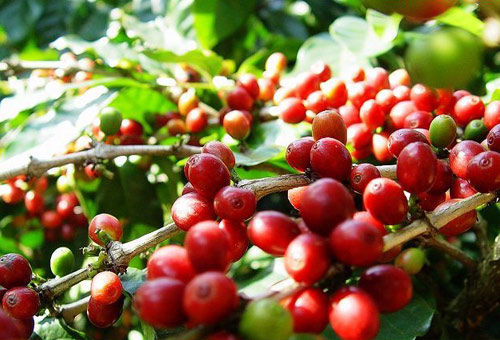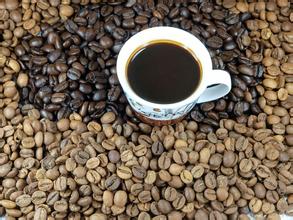Venezuela's distinctive manor coffee comes from this oil-rich country.

The distinctive manor coffee comes from this oil-rich country.
Oil was once considered Venezuela's main export. Although coffee trees were introduced from Martinique as early as 1730 and Venezuela, coffee production was almost abandoned during the heyday of the oil industry. Coffee plantations have recently begun to recover, with the old Tipica and Bourbon coffee trees and new plantations laying the groundwork for coffee exports. Currently, most Venezuelan coffee is exported to Russia and Colombia, where it is repackaged. Many newly rebuilt small plantations have also begun exporting coffee on their own.
Coffee is not prominent among the many industries in the country. Venezuela's best coffee-producing region is the southwestern state of Tachira. But the name takira has been indiscriminately applied to coffee beans across the country.
Venezuela's best coffees are Montebello from San Cristóbal de Tachira, Miramar from Rubio de Tachira, Granija from Timote de Merida and Ala Granija from Santa Anna de Tachira. Other premium brands include Maracaibos (the name of the coffee export port), Merida, Trujillo, Santa Filomena and Cucuta.
One of the many plantations in Merida, below the Andes, belongs to the Pablo and Luisa Helena Pulido families, an ancient farm that has been allowed to downsize. Since taking over the farm in the early 1980s, the Pulidos have grown new species while harvesting coffee from existing bourbon trees.
The area around Caracas, also known for coffee, has resumed production. Tipika coffee trees are also grown on Jean and Andres Boulton plantations in Turgua.
Venezuelan coffee tastes different from other Latin American coffees in that it is delicious, light and less sour than traditional coffee, which makes it not only blended but also unique.
Important Notice :
前街咖啡 FrontStreet Coffee has moved to new addredd:
FrontStreet Coffee Address: 315,Donghua East Road,GuangZhou
Tel:020 38364473
- Prev

Fine Coffee Costa Rican Coffee introduction to Costa Rica Coffee
The particles are full, the acidity is ideal and the aroma is unique and strong. Tarrazu in Costa Rica is one of the major coffee producing areas in the world. The coffee produced is light and pure in flavor and pleasant in aroma. Costa Rica, with its fertile volcanic soil and good drainage, is the first country in Central America to grow coffee and bananas for commercial value. Coffee and bananas are the main food in the country.
- Next

Boutique coffee Costa Rican coffee origin Costa Rican coffee practice
The particles are full, the acidity is ideal and the aroma is unique and strong. Tarrazu in Costa Rica is one of the major coffee producing areas in the world. The coffee produced is light and pure in flavor and pleasant in aroma. Costa Rica, with its fertile volcanic soil and good drainage, is the first country in Central America to grow coffee and bananas for commercial value. Coffee and bananas are the main food in the country.
Related
- Does Rose Summer choose Blue, Green or Red? Detailed explanation of Rose Summer Coffee plots and Classification in Panamanian Jade Manor
- What is the difference between the origin, producing area, processing plant, cooperative and manor of coffee beans?
- How fine does the espresso powder fit? how to grind the espresso?
- Sca coffee roasting degree color card coffee roasting degree 8 roasting color values what do you mean?
- The practice of lattes: how to make lattes at home
- Introduction to Indonesian Fine Coffee beans-- Java Coffee producing area of Indonesian Arabica Coffee
- How much will the flavor of light and medium roasted rose summer be expressed? What baking level is rose summer suitable for?
- Introduction to the characteristics of washing, sun-drying or wet-planing coffee commonly used in Mantenin, Indonesia
- Price characteristics of Arabica Coffee Bean Starbucks introduction to Manning Coffee Bean Taste producing area Variety Manor
- What is the authentic Yega flavor? What are the flavor characteristics of the really excellent Yejasuffi coffee beans?

